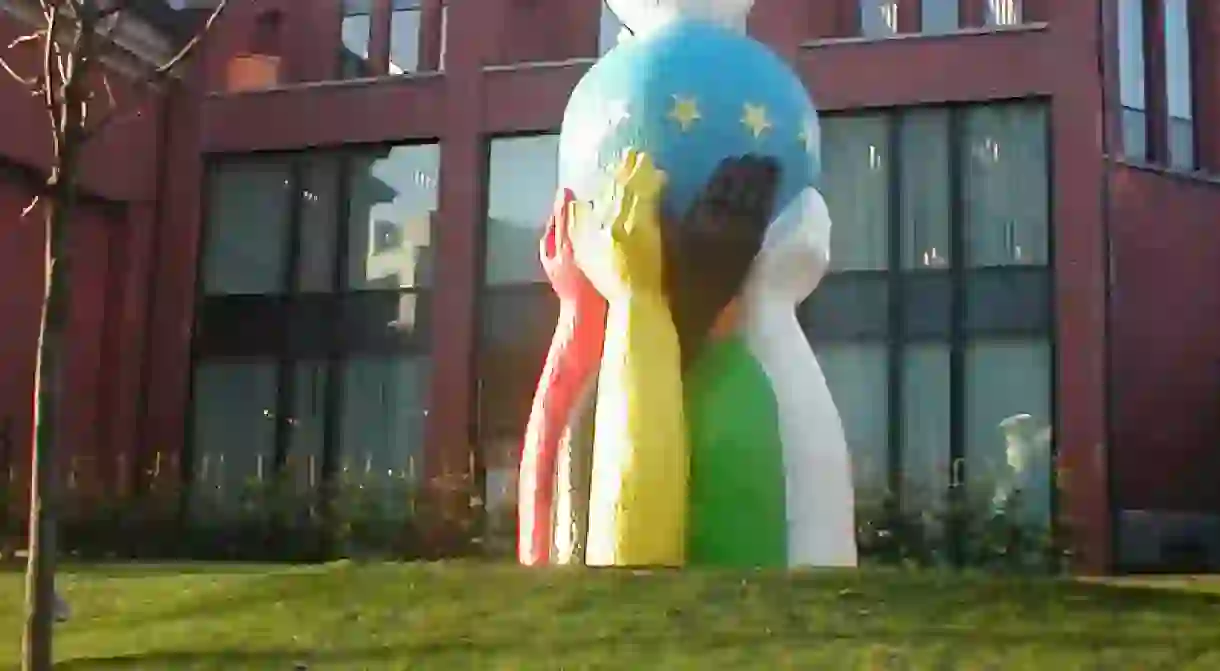The History Of The Statue Of Europe In 1 Minute

Although the Statue of Europe is not one of the most popular tourist attractions in Brussels, it still deserves to be recognized as a symbolic representation of the European Union’s motto, ‘United in Diversity.’
Inspiring Story
Designed by the European Commission, the Europe Statue was erected in 2003 during the European Year of People with Disabilities, which also served as the inspiration behind the work itself. The artist behind the statue, French painter and sculptor Bernard Romain, wanted to demonstrate that a handicap should not be classified as a weakness and aimed to prove this through the creation of the Statue of Europe.
Supervised by Romain, children from the disability community were invited to assist him in building the statue through modeling, painting, and polishing. The statue itself contains a white dove sitting atop a sphere depicting the EU flag’s colors, which is then held by several different hands, representing equality among various citizens and communities within Europe.

Every detail of the statue is significant, even the colors used for the arms are painted to represent the national flags for member states and are interlaced to showcase the fellowship and power of the EU.
The statue is located in the garden of the European Commission’s library, also called Convent Van Maerlant. It is made of resin and it is five meters high and weighs almost 800 kilograms. The statue was inaugurated by then Vice-President of the European Commission Neil Kinnock, and then Commissioner for Culture Viviane Reding.













